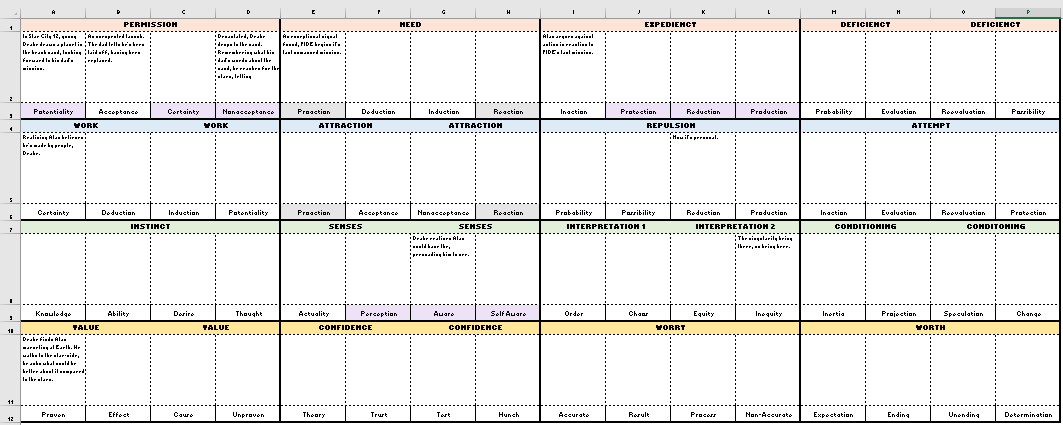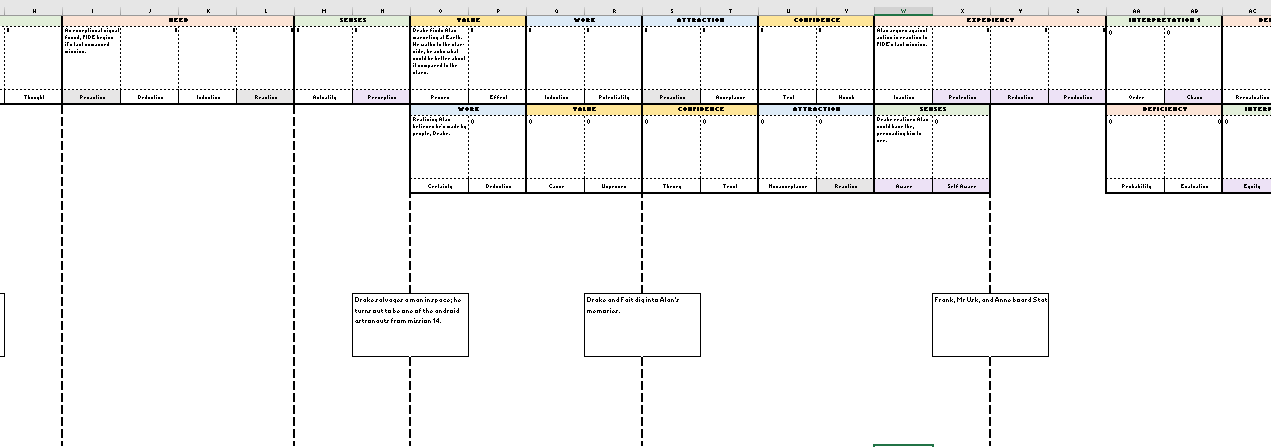It’s been a long time since I seriously delved into the theory side of Dramatica. For years, I kinda thought the stuff I had already learned gave enough guidance for my intuition to do the rest, and delving into the finest nuances of Scenes and Events would just be a waste of time.
But now, having learned about circuits, modalities etc. and seeing how ridicilously accurately they reveal why my favorite scenes and sequences feel the way they do (and why problematic scenes seem to lack drive), I decided to try to apply this to my outlining.
I’d like to share what I’ve been doing in case someone finds it useful in their own work, or can suggest improvements – lot of room for that, I’m sure.
Here’s what I’ve been doing in Excel: the Signpost and Journies of each Throughline with the Sequences of the PSR below.
So, I started wondering what would happen if the Acts were replaced with the Sequences and the Sequences with the Elements below:
What confused me was the notion that each Element was a Scene, when scenes in my treatment seemed to cover entire Sequences; and they weren’t dragging on for pages and pages – more or less four minutes of screen time max. So I wondered: isn’t each of these Elements already Event-sized?
Reading Chris’ example Jim linked in his article gave me more perspective on what an Event might be: it doesn’t drag on for an entire paragraph of a screenplay treatment, it’s more like a sentence or two, while Scenes seem to be the size of a paragraph or two.
This was a huge revelation. I decided to try ordering Scenes as closely as possible with the storytelling in my treatment. But simply putting the Scenes in one linear timeline felt wrong, cause that’s not how film works: some Scenes have more center stage, while others are being hinted at. So I decided to do this:
Each Throughline is color-coded. The top level is a sort of “main plot” from the audience’s perspective; it’s constructed from all Throughlines based on my intuition and knowledge of which Throughline is most dominant in my story at any given time. The second level are the Sequences I know are there (have started in the storytelling), but haven’t yet “blossomed”. Whenever there’s a Scene below the main plot, it is visited after the Scene above.
As you can see, the yellow of the IC throughline is first dominant, with the blue of the SS Throughline only starting, before dominating the IC Throughline. And boy, does this feel right! To me, it feels like the union of the messiness of storytelling in my head with the structural intent I know is covered under the jumbling perspectives.
EDIT: The dotted vertical lines are points where a typical “scene” break might be felt by the audience.
Any thoughts are welcome!



